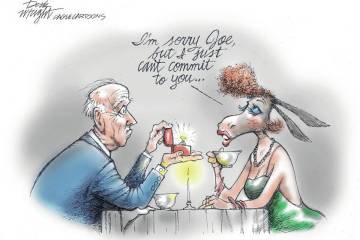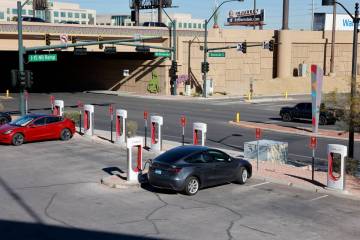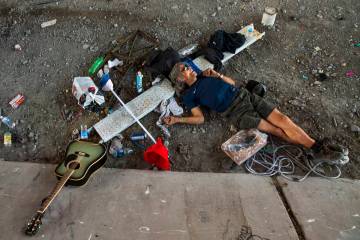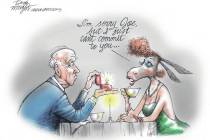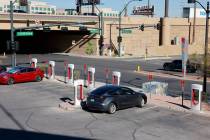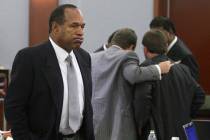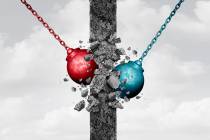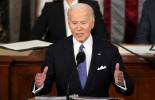COMMENTARY: Are things really so bad out there in the world?
A few years ago — probably four or five — I had an unexpected and terrifying thought: We could have World War III. Until then, I had blissfully believed, along with (I suspect) billions of others, that a nuclear holocaust — the shape of World War III — had been rendered obsolete by MAD (“mutually assured destruction”) and political and military safeguards to prevent accidental attacks.
Suddenly, these complacent assumptions seemed naive. The anti-proliferation framework was breaking down. More countries (Iran, North Korea and possibly Saudi Arabia, Egypt and who knows who else) might seek nuclear weapons. The opportunities for miscalculation, theft or terrorism would multiply. The inconceivable now seemed plausible.
I cite this personal experience because it captures the spirit of our time, which is fearful and pessimistic. Many will blame Donald Trump. This is misleading. He is a consequence more than a cause. Even without him, we would face growing economic uncertainty and political disorder. But now there is a backlash: The optimists are counterattacking. Good.
“As time passes, in the main the human condition improves — and this can be expected to continue,” writes Gregg Easterbrook in his new book “It’s Better than It Looks: Reasons for Optimism in an Age of Fear.”
Easterbrook presents piles of statistics, describing both the United States and the entire world, to prove that. The share of the world’s population living in “extreme poverty” — defined by the World Bank as no more than $1.90 a day of income — dropped from 37 percent in 1990 to 10 percent in 2015. Since 1993, U.S. violent crime rates have declined dramatically. (“Central Park after dark now is as safe as Yellowstone Park at noon,” writes Easterbrook.) One 2013 study found that 84 percent of Americans earn more than their parents did.
Examples of greater productivity, the basic source of rising living standards, abound. The United States has 21 percent less land under cultivation than in 1880 but now produces six times as much food and fiber. In 1967, Boeing manufactured one 737 aircraft a week; now it makes one a day.
If you prefer another source, you can consult “Enlightenment Now: The Case for Reason, Science, Humanism and Progress,” by Harvard professor Steven Pinker. He reports that Americans on average work 22 hours a week less than in the late 19th century and devote 43 fewer hours to housework.
Pinker has a coherent theory of progress. “The Enlightenment is working,” he writes. “Our ancestors replaced dogma, tradition and authority with reason, debate and institutions of truth-seeking.” The scientific method displaced superstition.
I agree mostly with Easterbrook and Pinker, because I wrote a similar book. Published in 1995, “The Good Life and Its Discontents” begins:
“The paradox of our time is that Americans are feeling bad about doing well. By most objective standards, the last half century in our national life has been enormously successful. Americans have achieved unprecedented levels of material prosperity and personal freedom. We are healthier, work at less exhausting jobs. … [And yet], a majority of us … express pessimism about the country’s prospects.”
There are many plausible explanations for the pessimistic bias. One is the revolution of rising expectations: When people experience economic and social gains, they expect more of the same and are disappointed. Another cause: Politicians and the media focus on short-term problems and not on long-term achievements. Easterbrook counted the number of instances The New York Times used the word “crisis” for a month. The answer was 914, or 30 times a day. People worry, because every problem is a “crisis.”
Easterbrook introduces an interesting idea, “collapse anxiety.” He defines this as people’s fear that economic and social change threatens their “way of life.” If that’s so, naturally they’re worried. The dilemma is apparent. Progress often requires change, but many people resist change.
We need to get the story straight. Contrary to Easterbrook, history is not a straight line upward. It takes many twists, including some (World War II, most obviously) that involve immense human tragedies.
Not all pessimism is irrational. In some ways, the world has changed for the worst. To take my original example: The possibility of a nuclear war now seems greater than during most of the Cold War.
Likewise, costly welfare states challenge most advanced societies. Similarly, the Great Recession has exposed the limits of our economic control.
But some of today’s pessimism is simply a political fad. It “became fashionable, starting in academia and expanding to the public square, brought there by politicians [and] social media,” writes Easterbrook. “Today the conventional wisdom is that any informed person should feel the world is falling apart.”
This sort of pessimism is self-defeating. It feeds on itself, promoting paralysis and more pessimism. It’s a dead end.
Robert Samuelson is a columnist for The Washington Post.




